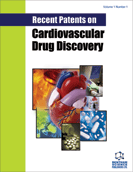Abstract
Hypertension is one of the major risk factors associated with cardiovascular diseases. A range of blood pressure-lowering agents is available including diuretics, α and β-blockers, aldosterone antagonists, calcium-channel blockers, angiotensin-converting enzyme inhibitors, angiotensin II receptor blockers (ARB) and direct renin inhibitors (DRI). Most patients require two or more medications to control their blood pressures within normal ranges. When high blood pressure cannot be controlled by low-dose monotherapy, physicians employ either high-dose monotherapy or combination therapy. High-dose ARB monotherapy is more effective for reducing proteinuria against low-dose ARB monotherapy or CCBs. Combination therapy is recommended for hypertension patients to facilitate prompt maintenance of blood pressure. Single-pill combination therapy simplifies treatment and optimizes long-term compliance. Thiazide diuretics such as hydrochlorothiazide (HCTZ), alone or in combination are still widely used as first-line hypertension treatment. Recent studies have shown that double (CCB+ARBs) or triple (CCB+ARBs+HCTZ) combination therapies have a greater lowering efficacy and are better tolerated. Moreover, the use of DRIs has been patented and proven effective in selected categories of hypertensive patients with or without concomitant target organ damage (TOD).
Keywords: Hypertension, monotherapy, combination therapy, angiotensin, thiazide, &, rennin
 21
21


